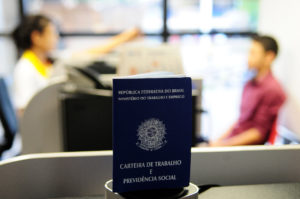Stability after maternity leave is a topic that causes some doubt among working mothers who want and need to return to work after the birth of their baby.
When a baby is born, they need various types of care and attention that only the mother can provide. Among these, exclusive breastfeeding with breast milk until at least 6 months of age.
Can I Be Fired After Returning From Maternity Leave?
Every woman has the right to decide when to become a mother, however, when the woman is a salaried employee, there may be concerns that her pregnancy will lead to dismissal after her baby is born.
According to the Labor Inspection Secretariat (SIT), dismissal following the period of stability after maternity leave is one of the most common excuses used by employers when firing a woman who returns to work after giving birth.
Some companies choose to terminate the woman who had a baby because, according to Article 396 of the CLT (Brazilian Labor Laws), during the working hours, the employed mother is entitled to two special breaks of half an hour each to breastfeed her child, until the child reaches six months of age, or perhaps because she sometimes arrives late due to doctor’s appointments for her baby — situations like these.
With this in mind, Brazilian legislation included, in Art. 10 of the Act of Transitional Constitutional Provisions (ADCT), the protection of stability for pregnant women from the confirmation of pregnancy until 5 months after childbirth.
That is, if the woman only leaves work on the date of delivery, she is still guaranteed one month of stability after maternity leave, when she will return to her work activities.
What Happens if I Return to Work and Get Fired?
Stability after maternity leave is protected by law. Having a child should not be reason for dismissal and constitutes discrimination against women.
“If companies dismissed all women who became mothers, in the future there would be no one to hire, because they would all be afraid to get pregnant,” says Ronoel Vela, lawyer and General Director of Labor Inspection at the Ministry of Labor and Social Welfare in El Salvador.
Although there are laws that protect pregnant women, the protection is no longer valid at the end of the period of stability after maternity leave.
Is Stability After Maternity Leave the Same as Pregnancy Stability?
Yes, all pregnant women who work with a formal employment contract cannot be dismissed without just cause from the date of conception (not from when the pregnancy is discovered) up to five months after childbirth, which falls under the period of stability after maternity leave.
If the woman discovers the pregnancy after already being dismissed, but can prove that conception occurred while she was still employed, she is entitled to rehiring.
The law guarantees immunity to all mothers with active employment relationships, which also includes the notice period. A very common example is a woman who has already been dismissed, is serving her notice, and discovers that she is pregnant.
She has not yet been disconnected from the company; she is still an employee, so she has the same rights as those still employed. The right to stability is important for both mother and baby, since it is very difficult for a pregnant woman to find new employment, especially close to delivery.
The dismissal of pregnant women is only valid if it is for just cause or at the woman’s own initiative.
What Is Maternity Benefit?
Maternity benefit, also known as maternity allowance, is a benefit created so that pregnant women, rural pregnant women, and adoptive mothers can have an income during the period when they are unable to perform their professional activities as usual.
Unfortunately, many women lack the necessary information and end up not taking advantage of this excellent benefit because they do not have adequate knowledge of their rights.
Domestic workers, women who contribute optionally, those who contribute individually, and unemployed women are entitled to the benefit, but many of them do not know it.
This benefit is paid for 120 days, that is, 4 months, after the baby’s birth, or, if recommended by a doctor, can be paid up to 28 days before and up to 91 days after childbirth.
What Is the Value of the Maternity Benefit?
In general, the value of the maternity benefit will depend on the role or regime where the worker is currently employed. For women under the CLT regime, the value will be equivalent to the current salary they receive from the company.
In the case of self-employed workers, the amount she will receive will be the average of her last year’s income, which can be proven through bank statements or signed contracts.
If she is a rural worker contributing to Social Security (INSS), she will receive a minimum wage during the 4 months of entitlement. Unemployed mothers can also apply for the maternity benefit from Social Security, where it will be assessed when she last worked with a formal employment contract, and whether she can receive the full value of the benefit.
See Also: Paternity Leave – Who Is Entitled?
Photos: Agencia Brasilia












